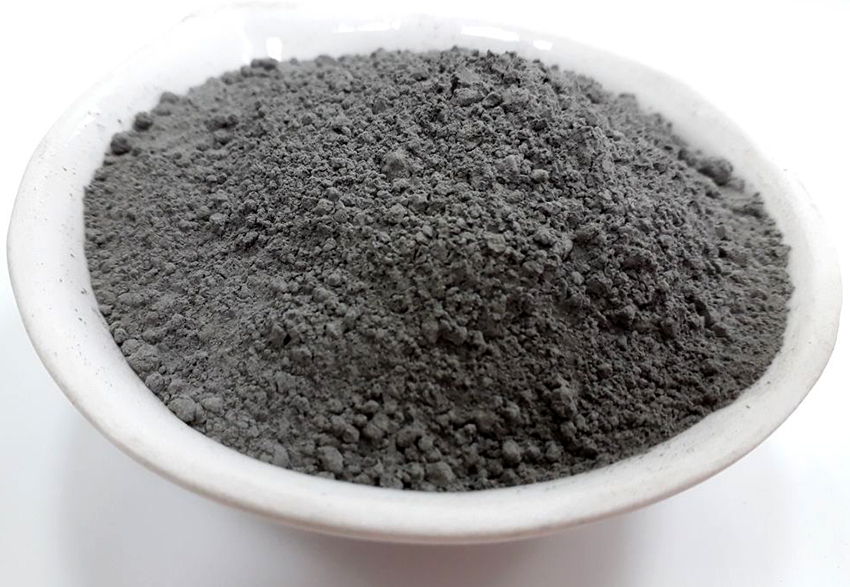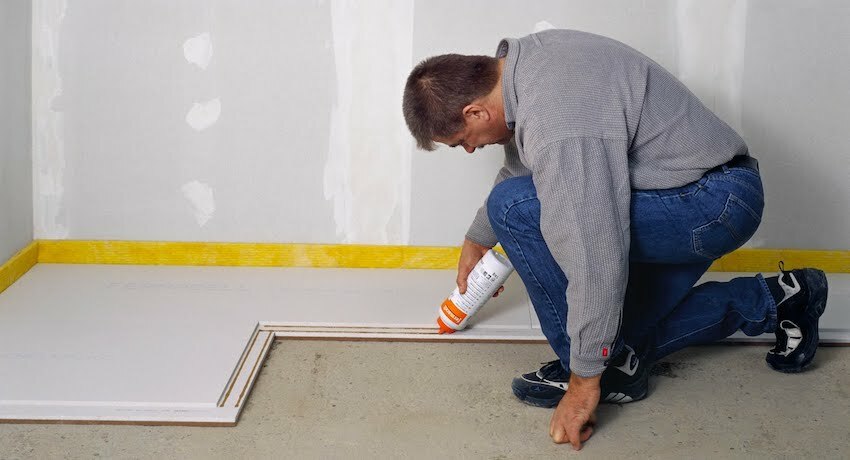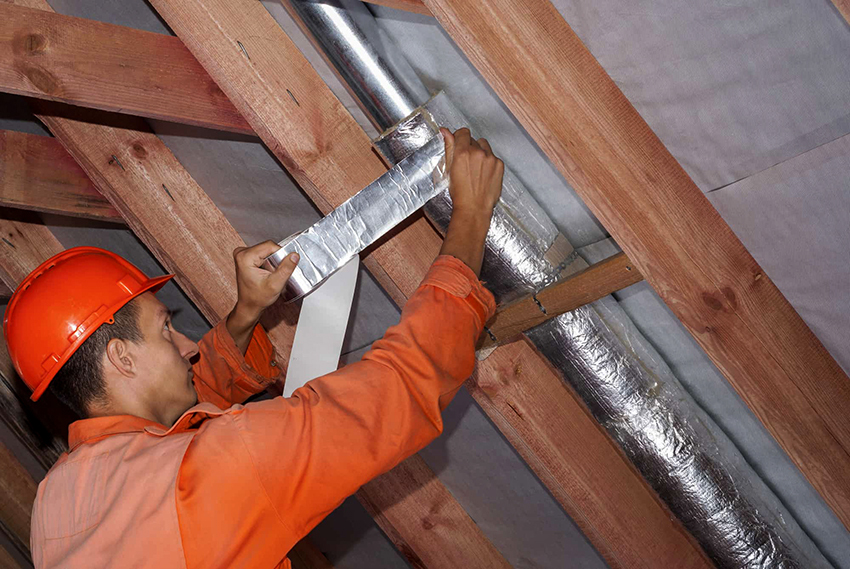
DSP painted panels on the facade of the house
It consists of cement particle board from wood chips, Portland cement and has a number of special additives. The manufacturing process is the mixing of these components with their further compressing and fermentation. Produce CFB board a specially equipped factories, taking into account the set of requirements and standards. Furthermore, all products are manufactured in the factory, it has the appropriate conformity GOST quality certificates passport.
Specifications DSP slabs: benefits and disadvantages
In favor of the use in the construction of the DSP panel shows a number of factors, among which:
- versatility - widely used for external furnish of the house, to create interior walls, and you can often find CFB board for the floor;
- This material complies with all the norms and standards required for its full use in the construction of: resistant to significant temperature changes, frost, fire, not a breeding ground for fungi, parasites, insects and rodents;

Application of cement particle board as cladding homes
- in the manufacturing process are not applicable to hazardous health impurities such as phenol formaldehyde resins asbestos and other;
- All materials have certificates and passports, confirming the quality of products and their compliance with GOST requirements, so that buying a product from a major manufacturer, you can not doubt his purchasing;
- DSP plate further easily subjected to practically any decoration - from paint and plaster to tiling or plastic panels;
- a sound insulation properties, with an index of 30 dB.
Useful advice!DSP boards though similar in its characteristics to the tree, but they have great strength, which makes them preferable to use wood.

Decorative-facing slabs DSP
High strength indicator plates DSP provides them with a three-layer structure. The panels are made of two layers of fine chips arranged on the outer sides and a layer of larger particles, hidden inside. Since the product is a more durable and not prone to bending Quitting. Furthermore, the material is a more smooth and resistant to moisture, which greatly enhances its use in the most challenging operating conditions.
Related article:
OSB Sheets: thickness and dimensions, prices and specifications. Parameters, classification, methods of production and application. Technical characteristics of the different types of oriented strand boards.
The only disadvantage of cement particle board - in an aggressive environment, the service life of about 15 years, which is very little for the construction material. But in order to extend the period of operation, you can create additional protection for the panels.
Composition and Certification DSP boards
When selecting a DSP boards need to pay attention to many parameters such as the composition, properties, specified in the product documentation, and dimensions: height, width and thickness of the plate, its ability to repel moisture and so forth. Let us consider the basic requirements for this material, which are set in accordance with GOST.

Composition cement chipboard
According to the rules, the composition of high-quality slabs should be as follows:
- 24% of the total weight of the product - wood chips;
- 8.5% - water;
- 65% - Portland cement (which provides strength and durability of the product);
- 2.5% - impurities (liquid glass and aluminum sulfate).
All these figures must necessarily be indicated in the passport product, to which is attached a certificate of product certification. Because DSP and application characteristics are directly linked. It is worth before buying to check on the manufacturer DSP boards reviews on the Internet.
DSP boards: size, price and other parameters
DSP price per sheet Retail determined depending on its size. In production there is a so-called DSP standard size DSP boards, which is 3200 × 1250 mm. The thickness can vary from 10 to 40 mm.

Standard sheet sizes 3200 to 1250 mm can be produced with varying thickness
According to the Standard, permissible deviations in terms of size (both width and length of the article). The thicker the plate, the greater the deviation is allowed in both upward and downward. Thus, for a panel thickness of 10 mm maximum deviation is 0.6 mm; 12-16 mm - 0.8 mm; 18-28 mm - 1 mm; 30-40 mm - 1.4 mm. However, the total error rate should not exceed 3 mm per product.
In addition to the DSP size, there are other technical indicators, which are compulsorily tested finished products, such as:
- in normal humidity, cookers density should not exceed 1300 kg / m²;
- water absorption rate should not be more than 16%;
- at a humidity of 6 to 12%, the DSP plate should not swell more than 2%;
- strength of the finished board in tension should be less than 0.4 MPa;
- to fold the following rules are provided: for panels of a thickness of 10-16 mm - 12 MPa 18-24 mm - 10 MPa 26-40 mm - 9 Mpa.

DSP is a structural material that gives the stiffness of the carcass structure
Government standards govern all, including even the degree of surface roughness of the plate. According to GOST 7016-82 maximum permissible roughness for the panels which have been treated on the grinding equipment, is 80 microns. A plate is provided for rough limit of 320 microns.
Price per sheet DSP retail differs depending on the size:
- the average price of DSP boards 10 mm thick - 900-1000 rub .;
- at a thickness of 20 mm - 1600-1900 rub .;
- on a panel of more than 30 mm thick, prices start at 2,000 rubles.
Useful advice!Many manufacturers provide significant discounts for wholesale customers, so it is better to calculate in advance how much material you need and place an order once.

The bearing capacity of DSP boards for concentrated load span
Weight DSP boards
Another important technical characteristic plates DSP - weight which depends on their thickness. For one standard-sized unit was 3200 × 1250 mm provides the following metrics:
- DSP 10 mm weight - 54 kg;
- weight DSP 12 mm - 64.8 kg;
- weight CFB board of 16 mm - 80 kg;
- DSP weight of 20 mm - 108 kg.
As is evident from the suggested data, the DSP 10 mm weighs half the weight of panel 20 mm thick. Therefore, to calculate how much it will weigh you plate the required length is a snap.

Weight of standard sheet DSP depends on its thickness
Special features DSP boards
manufacturing panels DSP technology constantly improving, trying to satisfy even the most complex customer requirements. Thus, the advanced technology in the industry have made it possible to manufacture ultrathin slabs - up to 4 mm. The main advantage of such boards - they do not require treatment on grinding machines, greatly reducing their market value.
In addition, very popular and smooth embossed plate, a feature of which is that of the raw materials thereof includes only the smallest particles. It is this kind are called DSP panel under a brick or stone under the DSP. Such panels do not require additional treatment with special compounds or dyes, and after the acquisition immediately ready for installation. They are used in many finishing work.
One of the most popular brands of boards DSP - Tamak. This company produces all kinds of panel thickness - from 8 to 36 mm, and is in great demand in the market of building and finishing materials. Catalog of the proposed DSP, reviews and prices of products can be viewed on the official website of the manufacturer.

Table manufactured by Tamak cement bonded particle boards
Key Applications DSP panels
Through the use of the DSP boards in building provides additional insulation, which is so necessary in homes. To this end, the panels are sheathed inner and outer surfaces of the walls and floors are lined. More commonly, cement particle boards used for the construction of interior partitions. Due to its characteristics, this material is well suited for rooms with high humidity. With no matter how difficult the operating conditions are not encountered, DSP boards certainly survive the entire term of its operation.
Application of DSP boards for the floor and creating internal partitions
Ease of laying on the floor slabs DSP - no need for subsequent surface finishing difficult. It is enough to be the traditional coats and waterproof paint or a special composition. Such panels look very well and did not violate his views even the most demanding interior.

Leveling the floor with DSPs
Of course, one can not deny the importance of quality and DSP assembly, because if the plates are poorly secured and processed, their service life can be significantly reduced. Especially if it is a particularly difficult conditions of use DSP panels.
DSP application areas are many, and this is largely due to the low cost of the material. Moreover, its affordable price does not affect the quality, making the panels ideal DSP various construction issues. Using such plates as rough finishing floor, you get an additional insulating layer and also strong and durable foundation for further coating.
Installation rules DSP boards on the floor
As confirmed by reviews, the application of DSP boards for the floor completely justifies all the above. This is a simple and inexpensive way to make a perfectly flat floor, at a cost of work a minimum amount of time and effort. The price of the DSP boards for the floor remains available even in the event of a budget repair option.

Fastening floor slabs by means of screws
DSP technology is laying on the floor provides for screwing to the crate. For this purpose, self-tapping screws with flat head, part of which is screwed into the base beams (20 mm in the case of solid wood and 10 mm for steel array).
Particular attention should be paid to the expansion seam as wood-based materials, including cement particle boards, though slightly, but tend to expand when exposed to moisture.
Obligatory presence of expansion joints is required:
- if the coating has a large area;
- near the door sills;
- near the walls or any other vertical structures, such as columns;
- if you want to change the thickness or appearance of the floor, for example, create a vertical projection and so on.

Scheme mounting on wooden joists DSPs
Specifications DSP plates: application for formwork
In the creation of formwork DSP boards also play a significant role. Thus, the use of these panels has a number of advantages:
- significant savings of time allotted for the execution of works;
- the ability to create more reliable designs;
- a significant reduction in financial costs for construction works.
By itself, the formwork panels of DSP looks finished architectural elements and does not require additional cladding. Moreover, such plates are often used as material for creating budget sills. However, in this case, the low price is combined with an attractive appearance and exceptional technical properties. Application of DSP through this popular in almost all spheres of modern construction.

DSP Plates used for shuttering the external walls of the building
Thickness DSP floor, experts recommend that ranges from 24 to 36 mm. Much depends on whether you will later use additional finishing materials and what. In any case, it is best to consult with a specialist just before you make a purchase.
Application of DSP panels for exterior finish home
Flawless look have finished building the foundation of facade panels on the DSP. Houses look especially stylish if you use a DSP under a brick. Properties of plates of this type do not allow to further cover them with special structures, which makes this embodiment finishes doubly comfortable.
Thickness DSP boards to be used for exterior decoration must be the maximum that the protective layer was thicker as possible. This will not only make the appearance of the building more attractive, but also create an additional barrier between the foundation and external negative factors that may affect it, such as rain, strong winds and etc. Photography DSP panels used for exterior trim, widely represented in the Internet.

Cement-bonded façade panels with stone crumb
Useful advice!Good use of DSP boards for the facade. Select suitable for the characteristics of the panel, it can be quite budget and at the same time aesthetically arrange the whole house.
Another unusual variant - SIP panel of DSP. They represent two cement particle boards, between which a layer of insulation. It's all held together with glue under high pressure. Therefore, the whole structure is obtained very strong. Due to the high quality of insulation used, SIP panels are completely clean and ecological material which, moreover, has a high rate of fire.
This option is ideal for use in the construction of a private house, its decoration and insulation.

SIP panel of DSP is used to overlap the device
Useful advice!CIP panels used as the final finishing material, and do not require further plasterboard paneling.
The modern market is full of various kinds of building materials, among which are slab and other products. However, few of them can compete with cement-bonded plates. Application of DSP so widespread that one way or another, spread to virtually all stages of construction. In addition, ecological material, as well as its affordable price, of course, remain out of competition.


